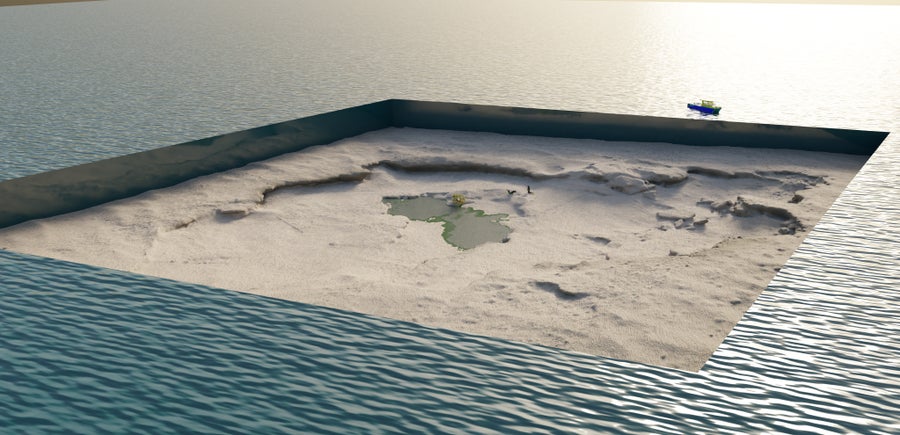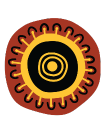
When marine geologist Mick O’Leary showed a group of Australian First Nations Elders a digital model of two ancient watering holes he had recently located—now under 14 meters of ocean—one man perked up, struggled to his feet and began speaking excitedly in his native tongue. Soon the whole group was talking and gesturing. O’Leary didn’t understand most of what its members were saying but did hear the phrase “half-and-half.”
The man who initially spoke, Timmy Douglas, had recognized the watering holes as part of a songline he’d known all his life. Songlines involve using dramatic story songs that First Nations people began creating long before the written word as a mnemonic and spiritual system to navigate Australia’s harsh terrain: they would do so by singing the songs as they walked across the land. These songs, which also define groups and laws and impart cultural values, have been passed down from one generation to the next over thousands of years. Perhaps the most famous is the Seven Sisters, a saga about a shapeshifting villain who chases the titular sisters (represented by the seven stars that make up the Pleiades) across the continent’s night sky; the song describes plains, creeks, rock formations, and more along the way. “Think of it like Google Maps,” O’Leary says, “but all in your mind.”
Douglas, who is in his 90s, had only ever seen half of the terrain described in the songline and never the half with the watering holes. This suggests that the songline may have been created more than 7,000 years ago, when the sea level was far lower—and the area with the watering holes was dry and more than 100 kilometers inland. “Whether it was inland 100 kilometers or out 100 kilometers, we still lived here,” says Vince Adams, a senior Yindjibarndi law man and deputy chairperson for Murujuga Aboriginal Corporation, which represents Traditional Owners and Custodians for Murujuga (called the Dampier Archipelago in English). “And we still got the story to tell you.”
The connection of the songline to a recent and remarkable archeological find by O’Leary and his colleagues illustrates how First Nations groups and modern scientists are learning to work together—in this case to find evidence of the ancient humans who lived on land that is now underwater, what the Murujuga Elders call “Sea Country.” Such evidence now includes stone tools that the scientists found last year on the ocean floor near the submerged watering holes.

A digital reconstruction of a submerged freshwater spring at Flying Foam Passage in Australia. Credit: John McCarthy/Flinders University
“It’s the oldest underwater archeology in Australia,” says Jonathan Benjamin, an archeologist at Flinders University in Australia, and first author on a study published earlier this year in Quaternary Science Reviews that describes the find. It’s also only the second confirmed First Nations underwater archeological site on the Australian seabed. Members of the study team also found stone tools in 2019 at a nearby, shallower site called Cape Bruguieres. That site was far easier to reach than the second one, which lay at the bottom of Flying Foam Passage, a narrow channel between two islands. “It’s a very tough place to dive in because of the tidal currents,” Benjamin says. “They rip right through there.” The treacherous conditions gave him and the other scientific divers just an hour a day to search for artifacts. Funding limitations meant they had only a week to look.
“It’s an exciting study because they used super high-tech methods to make really precise maps and do this [three-dimensional] imagery of their artifacts,” says Jessi Halligan, an underwater archeologist at Florida State University, who was not involved with the study.
The team plans to further study the finds with methods including geochemical analysis. This can create a “fingerprint” of the stone used to make the tools, which can in turn connect them to a specific quarry—thus revealing the toolmakers’ movements. And a residue analysis could also be revealing, says Wendy Reynen, a stone tool specialist on the study team. “If you’re skinning a kangaroo, you might get tiny, tiny, microscopic fragments of bone and blood and skin,” she says. “That could tell us what people were doing with that specific stone tool.”

